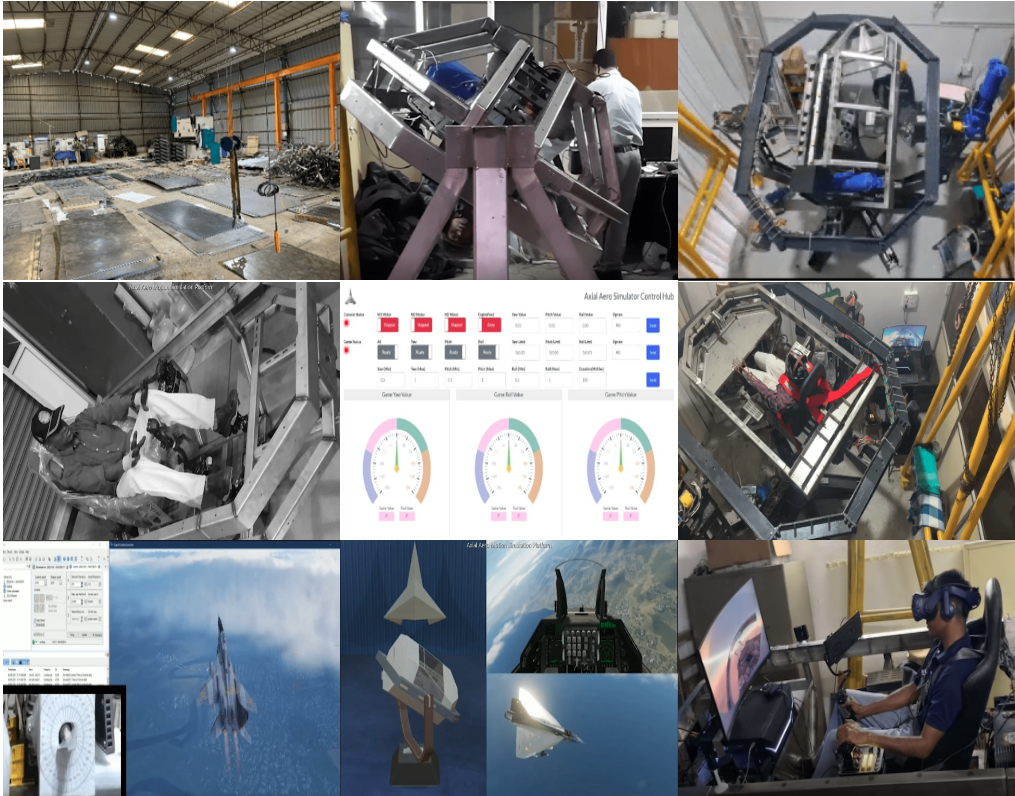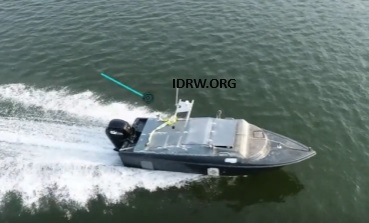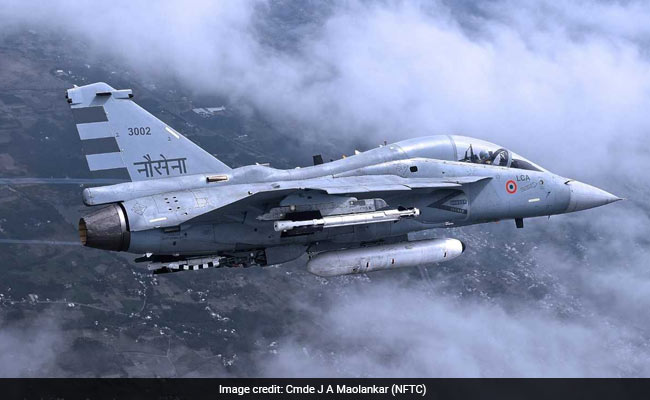Idrw Team
SOURCE: IDRW.ORG.


India’s state-owned Hindustan Aeronautics Limited (HAL) reportedly back in 2019 had proposed a design and development plan for a twin-engine fighter jet based on the LCA-Tejas platform, specifically catering to the Indian Navy’s needs. This proposal comes amidst discussions on the Twin Engine Deck Based Fighter (TEDBF) program spearheaded by the Aeronautical Development Agency (ADA).
Sources close to the development told idrw.org that HAL pre-empted the TEDBF program with their proposal. Their experience with the single-engine Naval LCA, used as a technology demonstrator, positions them as a contender. The ADA, the designated nodal agency for fighter jet design in the Country, initially proposed a 16.5-ton single-engine Naval LCA Mk2 with more powerful F-414 engines. However, concerns regarding the safety of single-engine fighter operations on aircraft carriers led to its rejection.
Continue readingSOURCE: IDRW.ORG.


Heavy Vehicles Factory (HVF) has successfully delivered the first batch of upgraded T-90 Mark III tanks to the Indian Army. These upgrades aim to significantly improve the capabilities of the existing T-90 fleet. While specific details remain under wraps, some key aspects of the modernization program have come to light.
The T-90 Mark III boasts improved firepower through the integration of a Correction Input Device (CID). This device refines gunnery accuracy by factoring in environmental conditions and barrel wear. Additionally, Night Vision Enablement brings upgrades like a Commander’s Thermal Imaging Sight (CTIS) and a Muzzle Reference System. These advancements enhance situational awareness and targeting capabilities, especially during low-light operations.
Continue readingSOURCE: IDRW.ORG.


The Indian Air Force’s (IAF) Multi-Role Fighter Aircraft (MRFA) program, aimed at acquiring 114 new fighter jets, appears to be facing delays. While the last major update came from Air Chief Marshal VR Chaudhari in October 2023, significant progress seems to be lacking.
The Indian Air Force’s (IAF) Multi-Role Fighter Aircraft (MRFA) program, aimed at acquiring 114 new fighter jets, appears to be facing delays. While the last major update came from Air Chief Marshal VR Chaudhari in October 2023, significant progress seems to be lacking.
Continue readingSOURCE: IDRW.ORG.


Two former Indian Air Force (IAF) fighter pilots have taken their passion for aviation to new heights with the creation of Axial Aero, a Telangana-based startup. Their revolutionary product – the AXIAL AERO 6 DOF-360° FLIGHT SIMULATOR – is poised to transform pilot training for the military and beyond.
The Axial Aero simulator surpasses existing technology with its advanced mechanical design and motion-cueing algorithms. Unlike traditional Stewart platforms, it offers a full 360° range of motion on all three axes (X, Y, and Z), replicating the G-forces experienced by pilots during real flight. Additionally, the simulator utilizes advanced actuators built into the seat to achieve realistic translational movement, creating an unparalleled immersive experience.
Continue readingSOURCE: IDRW.ORG.


Officials from Bharat-Forge have indicated that a potential order for 307 Advanced Towed Artillery Gun Systems (ATAGS) might materialize after the upcoming Indian elections. However, uncertainty surrounds the specific variant chosen by the Indian Army for production.
ATAGS, a collaborative effort between Tata Defence and Bharat-Forge, aims to replace aging artillery guns in the Indian Army’s inventory. While both companies have developed two distinct variants of the ATAGS, the Indian Army has yet to announce its selection for mass production.
Continue readingSOURCE: IDRW.ORG.


Sagar Defence Engineering has taken the wraps off its latest innovation – the Bali USV (Unmanned Surface Vehicle). This USV boasts impressive capabilities, making it a strong contender in the maritime domain.
The Bali USV is designed for speed, reaching over 25 knots and offering an operational endurance of 8-10 hours. This combination allows for swift response and extended missions at sea. The USV is equipped with a radar system, providing operators with real-time information about its surroundings. Object tracking capability further enhances its ability to monitor and identify targets of interest.
Continue readingSOURCE: IDRW.ORG.


The Defence Research and Development Organisation’s (DRDO) CSIR-Central Scientific Instruments Organisation (CSIR-CSIO) has issued a request for the H-Series Head Up Display (HUD) for India’s Intermediate Jet Trainer (IJT) aircraft.
A Head-Up Display (HUD) is a transparent display system integrated into an aircraft’s cockpit. It projects critical flight information, including airspeed, altitude, angle of attack, navigation data, and even weapon aiming information, directly onto the pilot’s line of sight. This allows pilots to maintain situational awareness and make informed decisions without constantly looking down at traditional instrument panels. This is especially beneficial during training maneuvers, where pilots are honing their skills in dynamic environments.
Continue readingSOURCE: IDRW.ORG.


In the aftermath of the 1971 Indo-Pak war, which led to the birth of Bangladesh, India had the legal right to claim significant war reparations from Pakistan. However, recent revelations have shed light on a rare list of unclaimed reparations amounting to an astonishing sum of Rs 543,51,14,294-90. These funds, which were to be claimed from Pakistan, remain unclaimed to this day, despite the victorious outcome for India in the conflict.
The detailed breakdown of these reparations, compiled shortly after the war, reveals the extensive financial toll and human cost incurred during the conflict. Among the notable items listed are the estimated value of casualties suffered by the Indian Army, the expenditure on troop movement and logistics, and the costs associated with the Indian Air Force and Navy’s involvement in the hostilities.
Continue readingSOURCE: IDRW.ORG.
3FVT.jpg)

Jindal Stainless, India’s leading stainless steel manufacturer, has emerged as a key contributor to the country’s defense sector. The company recently announced the development and successful delivery of 3 mm special alloy steel sheets for the Supersonic Missile-Assisted Release of Torpedo (SMART) system.
This development signifies a significant stride in bolstering the Indian Navy’s anti-submarine warfare capabilities. The specialized steel sheets, indigenously developed by Jindal Defence and Aerospace, a strategic vertical of Jindal Stainless, can withstand the extreme high pressure and high temperature encountered during flight.
Continue readingSOURCE: IDRW.ORG.


India has issued a Notice to Airmen (NOTAM) restricting airspace for a period from May 16th, 2024 to May 30th, 2024. The designated area for this NOTAM spans 330 kilometers, hinting at a possible missile test. While official confirmation is pending, speculation suggests it could be a surface-to-air missile system test.
NOTAMs are standard procedures to alert pilots of potential hazards in their flight paths. This particular NOTAM effectively restricts airspace within a designated area for the mentioned period. This restricted airspace is a strong indicator of an upcoming missile launch, as it ensures safety by keeping civilian aircraft out of the potential launch and missile trajectory zone.
Continue readingSOURCE: IDRW.ORG.


The P-72, a new assault rifle by SSS Defence, is making waves in the Indian defense industry. This homegrown weapon chambered in the popular 7.62x39mm caliber offers a compelling option for Indian paramilitary organizations.
The P-72 boasts select-fire capability, allowing for controlled single shots in semi-automatic mode or rapid fire in full-automatic mode. The operating system utilizes a short-stroke piston system, known for its reliability and reduced gas blowback. This translates to smoother operation and less fouling for the user.
Continue readingSOURCE: IDRW.ORG.


The Defence Research and Development Organisation’s (DRDO) CSIR-Central Scientific Instruments Organisation (CSIR-CSIO) is looking to procure Head Up Display (HUD) Mk1N-NP and Bore Sighting Equipment for the Naval Light Combat Aircraft (LCA).
A Head-Up Display (HUD) is a critical component of a fighter aircraft’s cockpit. It projects vital flight information, sensor data, and navigation cues onto a transparent display, allowing pilots to view this information without diverting their gaze from their surroundings. This is particularly advantageous during high-speed maneuvers, landings, and combat situations, where split-second decisions are crucial.
Continue readingSOURCE: IDRW.ORG.


High Commissioner of India to Malaysia, H.E. Shri B N Reddy, inaugurated the BrahMos Pavilion on the opening day of DSA & NATSEC Asia, in the presence of Addl. Secretary, Defence Production India Shri T. Natarajan. The event showcased India’s defense exports and provided a platform for potential collaborations.
The BrahMos Corporation, a joint venture between India and Russia, was a key highlight at the event. They offered their BrahMos-A air launched cruise missile for integration with the Royal Malaysian Air Force’s Su-30MKM fighter jets. Additionally, the BrahMos ship-launched variant was also presented as an option for Malaysia’s naval defense.
Continue readingSOURCE: IDRW.ORG.


Yantra India Limited (YIL), through its Ordnance Factory Ambajha (OFAJ) facility, has achieved a significant milestone by dispatching the first consignment of an export order for 155mm M 107 shells. This accomplishment marks a promising start for the new financial year and propels OFAJ towards a foothold in the global defense market.
The successful dispatch is attributed to the visionary leadership of Executive Director/OFAJ, Shri Anjan K. Mishra. This export order represents a major step forward for YIL, one of India’s crucial Ordnance Factories. The entire team at OFAJ takes immense pride in this achievement.
Continue readingSOURCE: IDRW.ORG TEAM.


A curious pattern has emerged: Chinese spy vessels conveniently appear in the Indian Ocean Region (IOR) whenever India issues a Notice to Airmen (NOTAM) for a missile test. According to top officials in the Defence Research and Development Organisation (DRDO) speaking to idrw.org, this heightened Chinese interest stems from India’s unique missile technology, particularly its manoeuvrable trajectories and multiple, field-interchangeable warheads.
Indian missiles stand out for their unpredictable flight paths. This capability, achieved through pitch manoeuvres, makes them difficult to track and intercept by enemy (air defense) systems. Additionally, Indian missiles boast the capability to carry multiple warheads, which can be swapped out in the field depending on the mission requirements. This versatility adds another layer of strategic advantage.
Continue reading